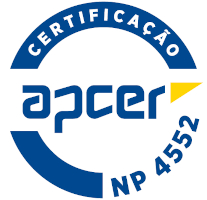2024
Animal Physiology I
Name: Animal Physiology I
Code: ZOO15222I
6 ECTS
Duration: 15 weeks/156 hours
Scientific Area:
Veterinary Medicine
Teaching languages: Portuguese
Languages of tutoring support: Portuguese
Regime de Frequência: Presencial
Learning Goals
Aims:
Introduce the fundamental principles of the functions of the animal organism, as well as the homeostatic mechanisms that regulate them.
Describe the mechanisms for processing and integrating sensations.
Describe the functions of the central and peripheral nervous system.
Describe the role of hormones in maintaining homeostasis and animal development
Discuss the integrated functioning of the organism.
Train for the recognition of normal and pathological situations.
Learning outcomes:
The student must: a) demonstrate that he / she knows the molecular bases of the main processes that happen in the animal organism; b) demonstrate that he/she understands the integrated functioning of the organs; c) recognize physiological parameters and identify deviations; d) use the physiological concepts for the resolution of abnormal situations in a clinical context; e) be able to interpret adaptations to different environmental contexts.
Introduce the fundamental principles of the functions of the animal organism, as well as the homeostatic mechanisms that regulate them.
Describe the mechanisms for processing and integrating sensations.
Describe the functions of the central and peripheral nervous system.
Describe the role of hormones in maintaining homeostasis and animal development
Discuss the integrated functioning of the organism.
Train for the recognition of normal and pathological situations.
Learning outcomes:
The student must: a) demonstrate that he / she knows the molecular bases of the main processes that happen in the animal organism; b) demonstrate that he/she understands the integrated functioning of the organs; c) recognize physiological parameters and identify deviations; d) use the physiological concepts for the resolution of abnormal situations in a clinical context; e) be able to interpret adaptations to different environmental contexts.
Contents
1. Introduction to the General Physiology. The cellular basis of Physiology. Homeostasis.
2. Neurophysiology. Physiology of nerve cell. Glia. Synapses. Physiology of muscle cell. Sense organs and receptors. Reflexes. Cutaneous, deep and visceral sensation. The senses: vision, hearing and equilibrium, smell and taste. Control of posture and movement. The autonomic nervous system. Central regulation of visceral function. Higher functions of nervous system.
3. Endocrinology. Hormones and mechanisms of hormonal action. Regulation mechanisms of hormonal secretion. Hypothalamic function. Anterior and posterior pituitary secretion. The pineal gland. The thyroid and parathyroid glands. The adrenal medulla and cortex. Endocrine functions of the pancreas, kidneys, heart and adipose tissue. Prostaglandins.
4. Male and female reproductive function
2. Neurophysiology. Physiology of nerve cell. Glia. Synapses. Physiology of muscle cell. Sense organs and receptors. Reflexes. Cutaneous, deep and visceral sensation. The senses: vision, hearing and equilibrium, smell and taste. Control of posture and movement. The autonomic nervous system. Central regulation of visceral function. Higher functions of nervous system.
3. Endocrinology. Hormones and mechanisms of hormonal action. Regulation mechanisms of hormonal secretion. Hypothalamic function. Anterior and posterior pituitary secretion. The pineal gland. The thyroid and parathyroid glands. The adrenal medulla and cortex. Endocrine functions of the pancreas, kidneys, heart and adipose tissue. Prostaglandins.
4. Male and female reproductive function
Teaching Methods
Teaching methodology: Teaching methods are based on lectures covering main topics, making students aware of the importance of the exposed subject. The aim is to combine the concepts with their application to specific cases. In practical classes, physiological concepts based on computer programs, laboratory techniques and the resolution of case studies are explored. Students are encouraged to solve the cases presented on their own, in order to develop autonomy.
Evaluation:
The grading of the course is based on two written exams along semester. Alternatively, a final written examination at the end of semester.
Evaluation:
The grading of the course is based on two written exams along semester. Alternatively, a final written examination at the end of semester.





















